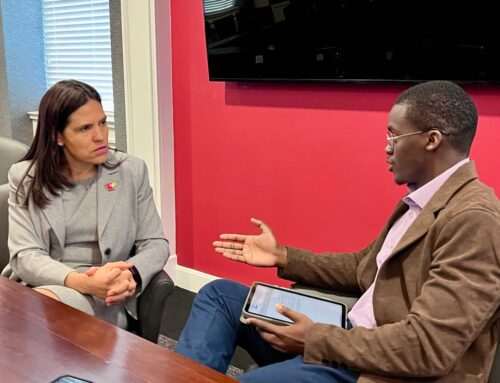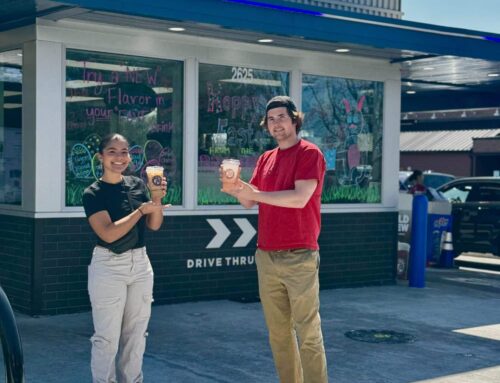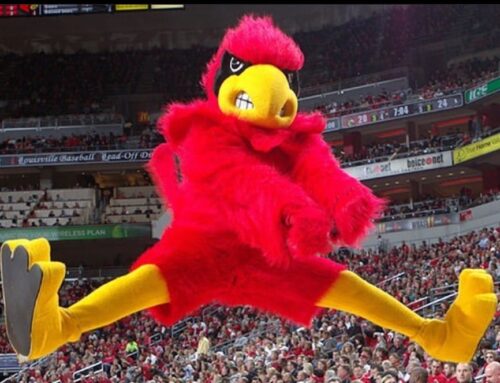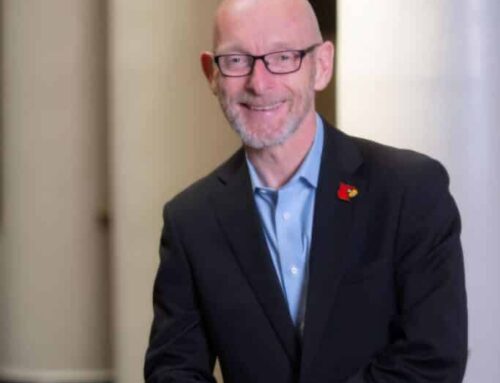By Simon Isham–
The story of Hanukkah
About 2,000 years ago, Syria was ruled by a king named Antiochus. Antiochus worshipped the gods of the Greeks and wanted to make a shrine to the king of them all, Zeus. The Jews of Syria already had an established temple, so he sent his soldiers in, forced the Jews out and converted their temple to one dedicated to Zeus. Furthermore, Antiochus forced the Jews to worship at the Hellenic temple; those who refused were put to death.
Five dissenting Jews, Judah “The Hammer” Maccabee and his four sons, organized and led a Jewish army to take back the temple, only to find that the eternal flame, which burned in the temple, had been extinguished. Using the last of the oil, the Maccabees lit the lamp, realizing that it would not be enough to keep the lamp burning until new oil could be made. And yet the oil burned for eight days — just the right amount of time for new oil to be added to the lamp.
Jews celebrate this miraculous occurrence annually with a holiday, but not all Hanukkah traditions are alike, as one can see from the accounts see below. Hanukkah 2012 starts on Dec. 8 and ends on Dec. 16.
Selling Hanukkah
Popular high-end shopping spot The Summit annually decorates with some Hanukkah spirit in the milieu of Christmas cheer; for the past three years, they have placed huge blue and gold dreidels among the other ornamentation in the central courtyard. Of course, this attempt at a multicultural holiday season has not been without its hang-ups. For example, during the first year they were displayed, the Hebrew letter “shin” was written upside-down through the month of December before this issue was corrected.
Community chest
The Jewish Community Center of Louisville has an extensive site for the education of both Jews and non-Jews alike in Hanukkah traditions. The site also contains some links to: the music video for “Candlelight,” the Maccabeats’ Hanukkah parody of Taio Cruz’s “Dynamite;” a dreidel app for iPhone; an Associated Press article entitled “How do hipsters celebrate Hanukkah? Ironically;” and an article on the Smithsonian website about “The eight cocktails of Hanukkah,” including Manishewitz Sangria. They and are also actively endorsing giving to or volunteering with the Jewish Community of Louisville’s 2012 Federation Campaign, the organization’s primary fundraiser, as well as its 16 Merry Mitvah service project ideas.
Spend it at shul
Conservative synagogue Adath Jeshurun is hosting several events to commemorate the holiday, including: Chanukah Chappens, a night of music, storytelling, poetry and comedy; AJ at the Glenview, an evening when Cantor David Lipp shares his favorite Hanukkah tunes, followed by a menorah lighting and doughnut reception; and the AJ Family Chanukah Party, where participants will light the hanukkiyah, eat latkes and suganiyot, play games, make frames, tell stories, sing songs, play dreidel and exercise with Hanukkah Zumba. The dates, times and locations of all these events are available on Congregation Adath Jeshurun’s new website, www.adathjeshurun.com.
A rabbinical perspective
Rabbi Slosberg of AJ said that since he views Hanukkah as a relatively minor Jewish holiday, his family “greatly plays (it) down.” They do, however, observe many widely known traditions, such as lighting candles on their hanukkiyah, the eight-branched lampstand which is perhaps better known as a menorah, and from which the word Hanukkah derives. They also play dreidel, and eat latkes and sufganiyot.
A globetrotter’s view
Dr. Natalie Polzer is a Jewish Studies professor at U of L who said that Louisville’s Hanukkah is not as spirited as other places she’s lived. In Jerusalem, Polzer recalled that the streets were crowded during the evenings, sufganiyot were sold street-side, and menorot were lit in almost every window — she noted that in Israel, every member of a household lights his or her own hanukkiyah. In Montreal, which has a very diverse Jewish population, she remembered seeing hundreds of special outdoor, oil-burning lamps encased in glass whose reflection twinkled against the snow in families’ front yards. “It’s something totally impossible to experience here,” she said. Polzer spent last year’s Hanukkah in Liverpool, where she saw the lighting of a huge menorah in front of city hall, and where she observed a Star of David on a public monument. “Nobody would ever permit that to be seen in Louisville,” said Polzer. “Here, there’s no energy in the neighborhoods. There’s no visible experience like there was in Jerusalem, or in Montreal or in Liverpool. The mitzvah with Hanukkah is to publicize the miracle. The more public it is, the more meaningful it is.”
A native abroad
Hannah Reikes is from Louisville, but is currently living in Israel on a gap-year program for Conservative Jews called Nativ. Her observations thus far: “The atmosphere isn’t exactly the equivalent of Christmas in the States. There are (Hanukkah) lights on the light posts and menorot on display in shop windows, but it’s not as ‘in-your-face’ as Christmas is. The thing that really sticks out during the pre-(Hanukkah) season is the smell of the streets. Every bakery in town is making the most amazing variety of sufganiyot pretty much continuously. The only way to accurately describe it is that it just smells like happiness. But in all honesty, (Hanukkah) doesn’t really start until the holiday actually begins.”
Analysis from a Jewish mother
Robin Reikes is a self-employed illustrator and art educator whose family has more traditions than can be listed here. She weighs in: “The whole deal is a little quirky, really; we commemorate a military victory by teaching our children to gamble, frying all our food — Antiochus didn’t kill us, but high cholesterol will! — while belligerently refusing to buy a bunch of expensive gifts at the peak of a national consumer feeding frenzy … What’s not to love?!”
Playing Dreidel
To play dreidel, you first need to own, make, or purchase a dreidel or download the app mentioned above using the link from the Jewish Community Center’s Hanukkah site.
Get some gelt or any other kind of token. Distribute them evenly amongst the players.
Before each spin, each player should place a token in the middle, which comprises the pot.
Each person should spin the dreidel, going around the circle either clockwise or counterclockwise. Consult the graphic to the left/right to determine what the result of each possible spin entails. “Shin” means that a player must add one of their tokens to the pot. “Nun” means that a player takes no action. “Gimmel” means that the player takes the entire pot for him or herself. “Hay” means that a player takes half of the tokens in the pot.
When one player has everything, the game is over.
Goyishe glossary
Chanukah — alternative spelling of Hanukkah. The Cardinal uses the spelling “Hanukkah” because it is the agreed-upon spelling in the Associated Press Stylebook, but in truth, there is no one correct spelling of the word.
Dreidel — wooden top used in a game traditionally played on Hanukkah.
Gelt — chocolate coins given to children.
Goy — Yiddish term for a non-Jew.
Hanukkiyah — eight-branched lampstand which is similar to a menorah, plural menorot.
Kosher — foods that conform to strict Jewish dietary laws.
Latkes — potato pancakes.
Manishewitz — popular manufacturer of kosher foods.
Mitzvah — commandment.
Shul — Yiddish slang for synagogue.
Synagogue — the Jewish house of worship.
Sufganiyot — jelly doughnuts.






